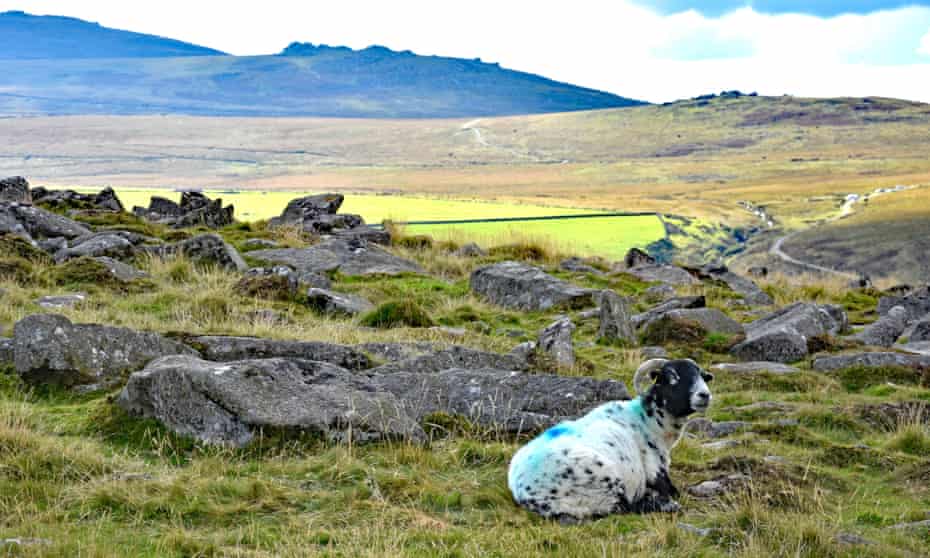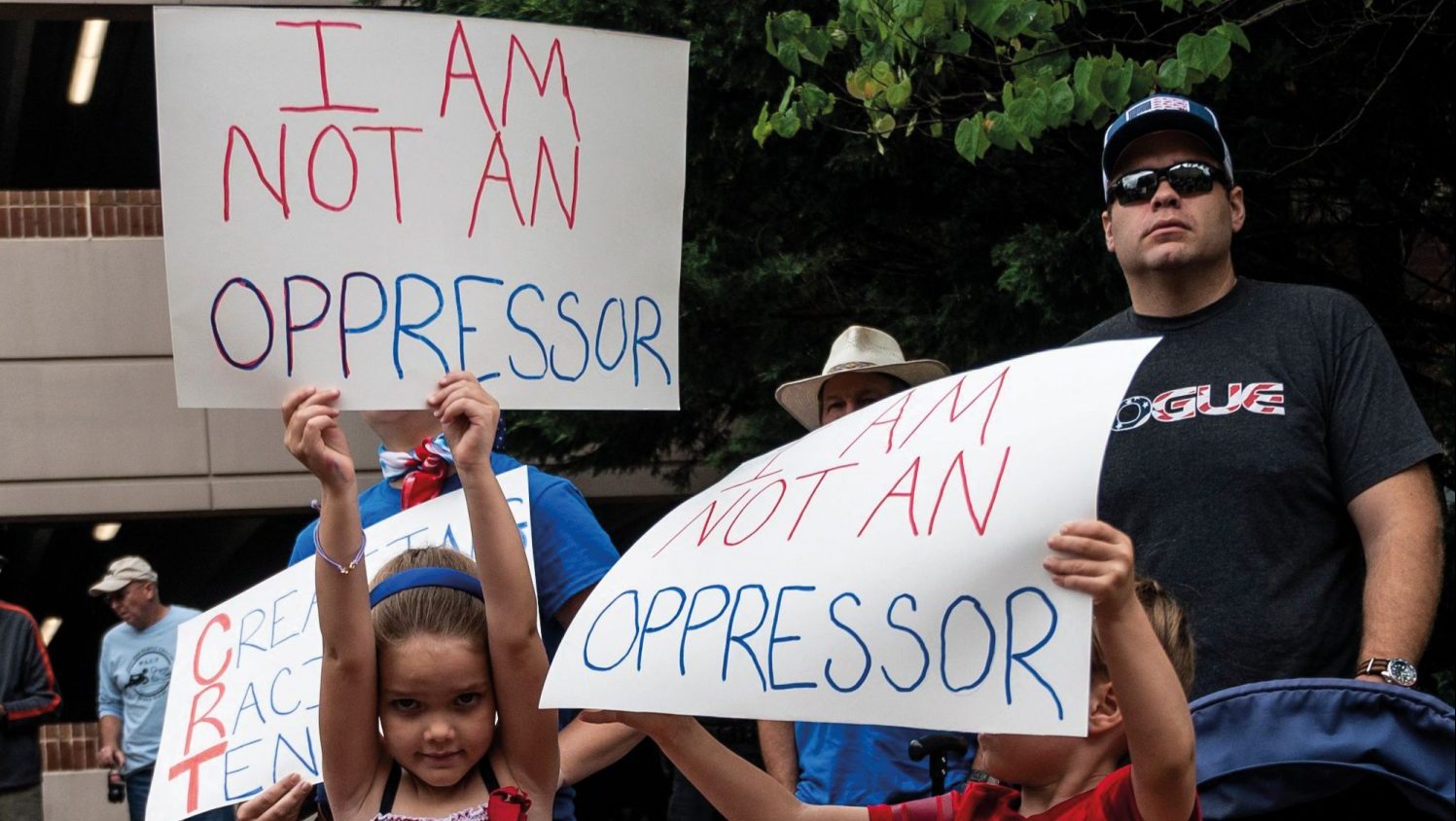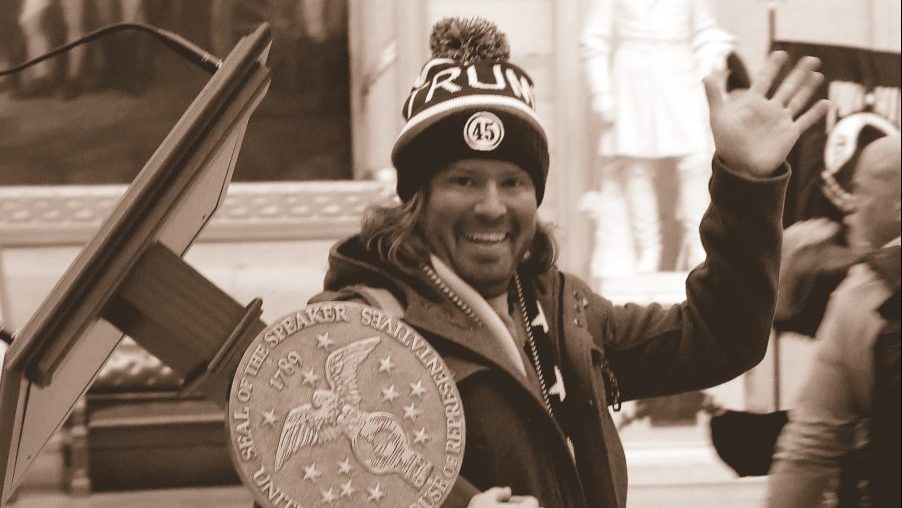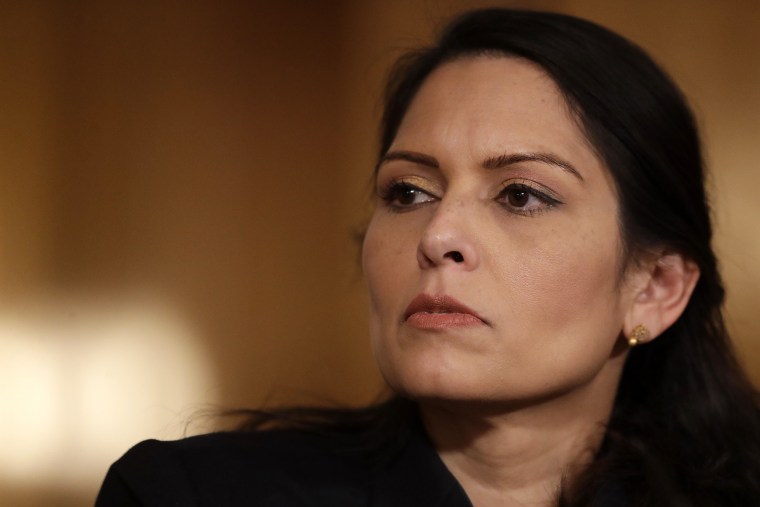NPR
The attack on the U.S. Capitol was based on a “Big Lie” about election fraud in 2020, and the hope of supporters of former President Donald Trump that they could stop the certification of electoral vote results. But in the year since, there's been a new misinformation campaign to recast, downplay, and misrepresent the events that unfolded at the capitol. Amna Nawaz reports.
Read the Full Transcript
Judy Woodruff:
The attack on the U.S. Capitol nearly one year ago was based on a big lie about election fraud in 2020 and the hope of supporters for former President Trump that they could stop the certification of electoral vote results.
But starting that day, there's been a new misinformation campaign to recast, downplay, and misrepresent the events that unfolded at the Capitol.
Amna Nawaz reports.
Amna Nawaz:
They broke through barricades, assaulted police, smashed their way into the Capitol, and sent lawmakers into hiding.
Yet, even as the attack was playing out, there were already alternative narratives being spun about who was to blame.
Laura Ingraham, FOX News:
There are some reports that Antifa sympathizers may have been sprinkled throughout the crowd.
Drew Hernandez, Investigative Reporter:
Possibly Antifa insurrectionists possibly could have infiltrated some of these movements and maybe instigated some of this.
Rep. Matt Gaetz (R-FL):
The Washington Times has just reported some pretty compelling evidence from a facial recognition company showing that some of the people who breached the Capitol today were not Trump supporters. They were masquerading as Trump supporters and, in fact, were members of the violent terrorist group Antifa.
David Graham, Staff Writer, "The Atlantic": In the first hours and days afterward, you could see Trump and his allies and supporters sort of groping for what the appropriate narrative was.
Amna Nawaz:
David Graham is a staff writer at "The Atlantic" magazine.
David Graham:
So, on the one hand, you had Trump coming out with his video on the day of saying: We love you, but now go home.
But you also saw people saying, oh, this is agitators, it was Antifa, it was Black Lives Matter.
Amna Nawaz:
That despite contemporaneous texts between pundits on FOX and the White House showing they thought Trump supporters were responsible.
When subsequent arrests confirmed that publicly, the narrative on the right shifted to downplay the violence that day.
Here's former President Trump on FOX in March.
Donald Trump, Former President of the United States: Right from the start, it was zero threat. Look, they went in. They shouldn't have done it. Some of them went in and they're hugging and kissing the police and the guards.
Rep. Andrew Clyde (R-GA):
There was no insurrection. And to call it an insurrection, in my opinion, is a bold-faced lie.
Amna Nawaz:
Republican Congressman Andrew Clyde at a hearing in May.
Rep. Andrew Clyde:
You know, if you didn't know the TV footage was a video from January the 6th, you would actually think it was a normal tourist visit.
David Graham:
It was strange to see somebody like Congressman Andrew Clyde, who — of Georgia, who we saw in videos and footage from January 6 helping to bar the doors, suddenly saying, well, these were just tourists, they were walking through.
Amna Nawaz:
Another recurrent theme, shifting focus away from January 6 and towards protests for Black Lives Matter the year before.
Republican Congressman Clay Higgins of Louisiana:
Rep. Clay Higgins (R-LA):
Nineteen people died during BLM riots last year. Hundreds and hundreds were injured; 2,000 police officers were injured from BLM riots last year.
Amna Nawaz:
Voices on the right have also recast those awaiting trial for their part in the attack as political prisoners.
Here's Republican Congressman Paul Gosar of Arizona last month:
Rep. Paul Gosar (R-AZ):
These are dads, brothers, veterans, teachers, all political prisoners who continue to be persecuted and endure the pain of unjust suffering.
Amna Nawaz:
So too with the death of Ashli Babbitt, the Air Force veteran shot by Capitol Police as she attempted to breach the speaker's lobby.
Here's Republican Representative Jody Hice of Georgia in May:
Rep. Jody Hice (R-GA):
In fact, it was Trump supporters who lost their lives that day, not Trump supporters who were taking the lives of others.
Amna Nawaz:
Former President Trump reinforced that in a July interview on FOX.
Donald Trump:
Who was the person who shot an innocent, wonderful, incredible woman, a military woman?
David Graham:
The idea that they were all motivated by these good intentions, they believed the election was stolen, which, of course, was false — it was a lie that had been peddled to them by the president and many of his allies — but they were going in and they wanted to stand up for what was right, that they were sort of like the American revolutionaries or like the Confederate rebels, who wanted to really uphold the best of the Constitution.
Amna Nawaz:
In an October piece in "The Atlantic," Graham explored this idea, how those who committed criminal acts to stop a democratic process have been recast by the far right as heroes, patriots and martyrs for a just cause, much like the Confederate soldiers celebrated by the mythology of the Lost Cause.
The fact that those people are referred to by some in these circles as patriots, what does that do to the narrative?
David Graham:
It makes them into the heirs of what was right. It turns something that was one of the darker moments in American history into one of the brighter ones, into a moment of unity and rebellion against what's wrong and standing up for what's right, which I think is really dangerous.
If we can turn that something that's an assault on a constitutional process into a moment of triumph and a moment of — a sort of lodestar for what's to come, I think that doesn't bode well for American democracy.
Amna Nawaz:
These efforts could be working.
An NPR/"NewsHour"/Marist poll conducted last month showed a sharp partisan divide over how Americans view what happened on January 6, the legitimacy of investigations into it, and decreasing blame for President Trump, even as the former president continues to push the lie at the heart of January 6.
The durability of that lie, where does that fit into sort of the larger misinformation campaign, the very thing that brought people out on January 6 in the first place?
David Graham:
Well, it's essential to the legitimacy of Trump as a political actor today.
If he's somebody who had the election stolen from him, that makes him still a sort of heroic figure and a more legitimate leader perhaps than Joe Biden, in the eyes of his supporters. And that makes it — that enables a lot of other information.
Amna Nawaz:
Information or, more accurately, misinformation questioning or undermining everything from measures to stop the spread of COVID-19, to the safety and efficacy of vaccines, from bogus stories about vaccines tracking and controlling Americans, to campaigns to stop teachers from talking about race or racism in schools.
David Graham:
So, when people in the Trumpist orbit spread misinformation about Joe Biden, or they spread misinformation about vaccines or about COVID, all of these spring from his legitimacy as the real elected leader, which depends on the lie of the election being stolen.
Amna Nawaz:
For more on the misinformation surrounding January 6 and how it's spread and evolved, I'm joined by two people who track and study just that.
Jennifer Kavanagh is a senior political strategist at the RAND Corporation. She co-authored the book "Truth Decay" about the rise of misinformation. And Claire Wardle is the U.S. director of First Draft. That's a nonprofit that tracks misinformation online.
Welcome to you both, and thank you for being here.
Claire, I will begin with you.
As we just saw, immediately after the Capitol attack, there were already alternative narratives being spun, despite live pictures, live reports, people seeing it in real time.
In our latest "NewsHour"/NPR/Marist poll, it shows a divide on how Americans saw that day; 89 percent of Democrats say January 6 was an insurrection, was a threat to democracy, but only 10 percent of Republicans agree with that.
How does that happen, Claire?
Claire Wardle, U.S. Director, First Draft:
Because there was a foundation being laid all the way through 2020, and then from Election Day onwards.
This Stop the Steal narrative was emerging, this idea that the election was not safe, that the election was stolen. There was this drip, drip, drip throughout November and December. And so, when we had the events of January, very quickly, very smart people began shaping these narratives that already had a foundation that made sense to people who wanted to believe a certain world view.
Amna Nawaz:
Jennifer, talk to me about the role of news and journalism in all this, because you have studied this about the declining trust in news, Americans' skepticism around news.
How much do you think that contributed to people being willing to say, what you're reporting, what you're showing me, I don't believe?
Jennifer Kavanagh, RAND Corporation:
I think it played a big role.
I mean, people get their information from specific sources. And when they see information coming to them from sources that they don't trust, they tend to discard that information.
It's also really hard to change people's minds once they have made it up. So, when people see additional information coming at them that contradicts that, they're not ready to discard what they have been believing for months or what they have been hearing from their trusted figures.
So, the fact that people have such low trust in media plays a big role in their lack of — their lack of ability to change their mind, and the difficulty that we face in trying to spread accurate information after the fact.
Amna Nawaz:
Claire, we know one of the main ways in which that information was spread even well before the Capitol attack was on social media, right?
We saw even leading up to that day the whole Stop the Steal narrative, how those groups not only organized online, but then mobilized online, got people to show up in real life to commit criminal acts after that organization.
What responsibility lies with the companies behind those social media platforms?
Claire Wardle:
When you look back at the timeline, it was only September of 2020 when Twitter started marking as false tweets from the president, for example, saying that the votes couldn't be trusted.
So, I think the platforms were — absolutely weren't ready for this. And then, as we saw on essentially January 7 and 8, they panicked and, like dominoes, they all started changing their policies and deplatforming.
But the disinformation ecosystem is really participatory and engaging. And that's what's happening on these platforms. Not that much has changed in a year. And that's what we should be more worried about, not to see it as a one-off, and what changes have the platforms made? And I would say, not enough.
Amna Nawaz:
So, Jennifer, you have used this phrase truth decay in your work, and nowhere have we seen that more potently than when it comes to the pandemic and disinformation on social media and other places around the efficacy of vaccines and the efficacy of mitigation measures.
And these are all things that are backed by science. They're backed by data. But, as you lay out, there's declining trust in those two things. So, can that decay, as you lay it out, can it be reversed?
Jennifer Kavanagh:
Well, the challenge is that disinformation tends to have an emotional component. As Claire described, it's participatory. It becomes part of the believer's identity.
And so, trying to reverse the decay, as you described, is not simple. It's very, very challenging, because you're actually having to break into people's world view and change how they see the world. This is a challenge for a whole range of stakeholders.
Social media companies are one. Researchers and scientists are another. How do we make data, whether it's about vaccines or COVID or election integrity, how we do make that data, that narrative compelling to people who are not inclined to believe it?
One piece of that is thinking about who provides the messages. There's a concept of strategic messengers, trusted people within communities that are vulnerable or at risk for believing conspiracies and disinformation.
I think election integrity is one of those cases where identifying allies within the communities that are vulnerable to that information is a challenge. And I don't think it's a challenge that has been addressed yet, which is why this — the conspiracies and disinformation around the 2020 election continue to thrive.
Amna Nawaz:
Claire, you have also done some work on this about how people can arm themselves, right, how they can outsmart misinformation or disinformation campaigns, whether it is around elections or political candidates or vaccines or the pandemic.
What are some of those tactics? What should people know?
Claire Wardle:
What the research shows is, whilst it's important to have fact-checking, what we should be doing is actually, rather than focusing on the individual rumor or conspiracy, teaching people the tactics of those who are trying to manipulate them, because what the research shows is, whoever you are, whatever your political persuasion or even education level, nobody wants to believe that they're being hoaxed or fooled.
So, the more that communities can work with each other to teach them, well, if you see a text message that says, my brother works for the government and he's telling me, dot, dot, dot, an anecdote, as Jennifer just said, that, in itself, teaching people, well, just be a little bit more savvy about that, because that's a known tactic.
So, the more we can teach people tactics and techniques, rather than waiting for the rumor and then kind of playing Whac-A-Mole, we're actually seeing the research show that's a much more effective way of building the resilience that means that, when they see misinformation, they're more likely to identify it as that.
Amna Nawaz:
Claire, I have to ask, after all the work you have done — and, Jennifer, I will ask the same thing of you — with misinformation and disinformation so prolific, now being pronounced and perpetuated from even the highest office in the land at times, do you have hope that that can be brought back under control?
Claire Wardle:
I still have hope. Otherwise, I wouldn't get up every day.
But I think what we have to realize is, this is a very long game. I'd say, this is the battle of our lives for the next 20 to 30 years around climate, elections, vaccines, health. And we need to start thinking that this is a long game. There's no quick fix. We can't just shift the Facebook algorithm and make it all go away.
Amna Nawaz:
Jennifer, what about you?
Jennifer Kavanagh:
I agree with Claire.
I think it's important to recognize that this — that the challenge that we face now has evolved over several decades. And it's going to take just as long to figure out a way to manage the situation, so really thinking about this as a — from a holistic perspective, and understanding that, whatever future we work to, that's hopefully better than what than what we face today.
It's not going to look the same as 20 or 30 years ago. The goal isn't to put the cat back in the bag. The goal is to figure out sort of what we want online spaces to look like, what we want our society to look like, and how we want to interact in that way.
I guess that's what gives me hope, is thinking that we can — we can work towards that better future, rather than thinking about how we make things go back to the way they were.
Amna Nawaz:
That is Jennifer Kavanagh and Claire Wardle.
Thank you so much to both of you for joining us.
Claire Wardle:
Thank you.
Jennifer Kavanagh:
Thanks for having me.




















